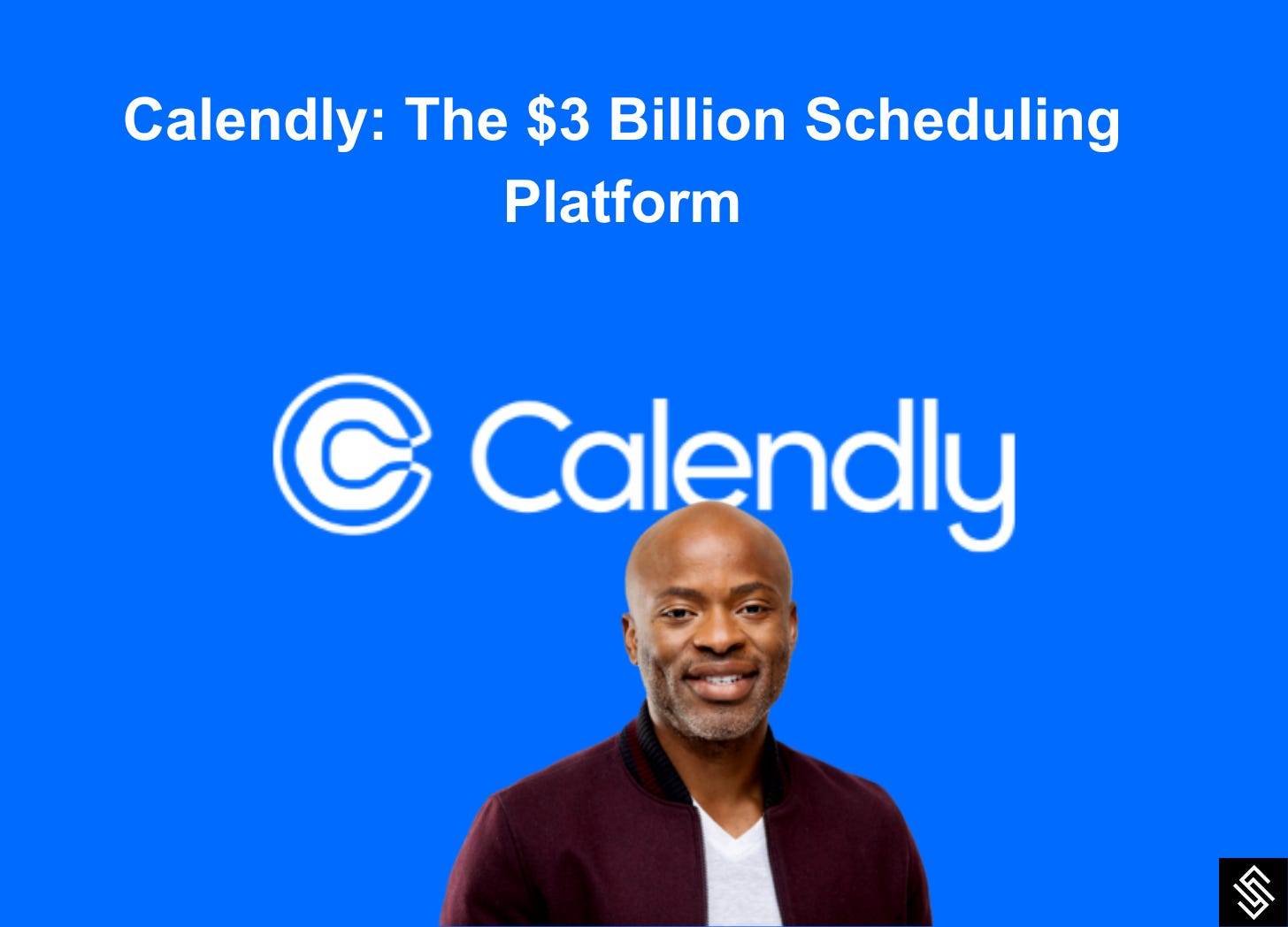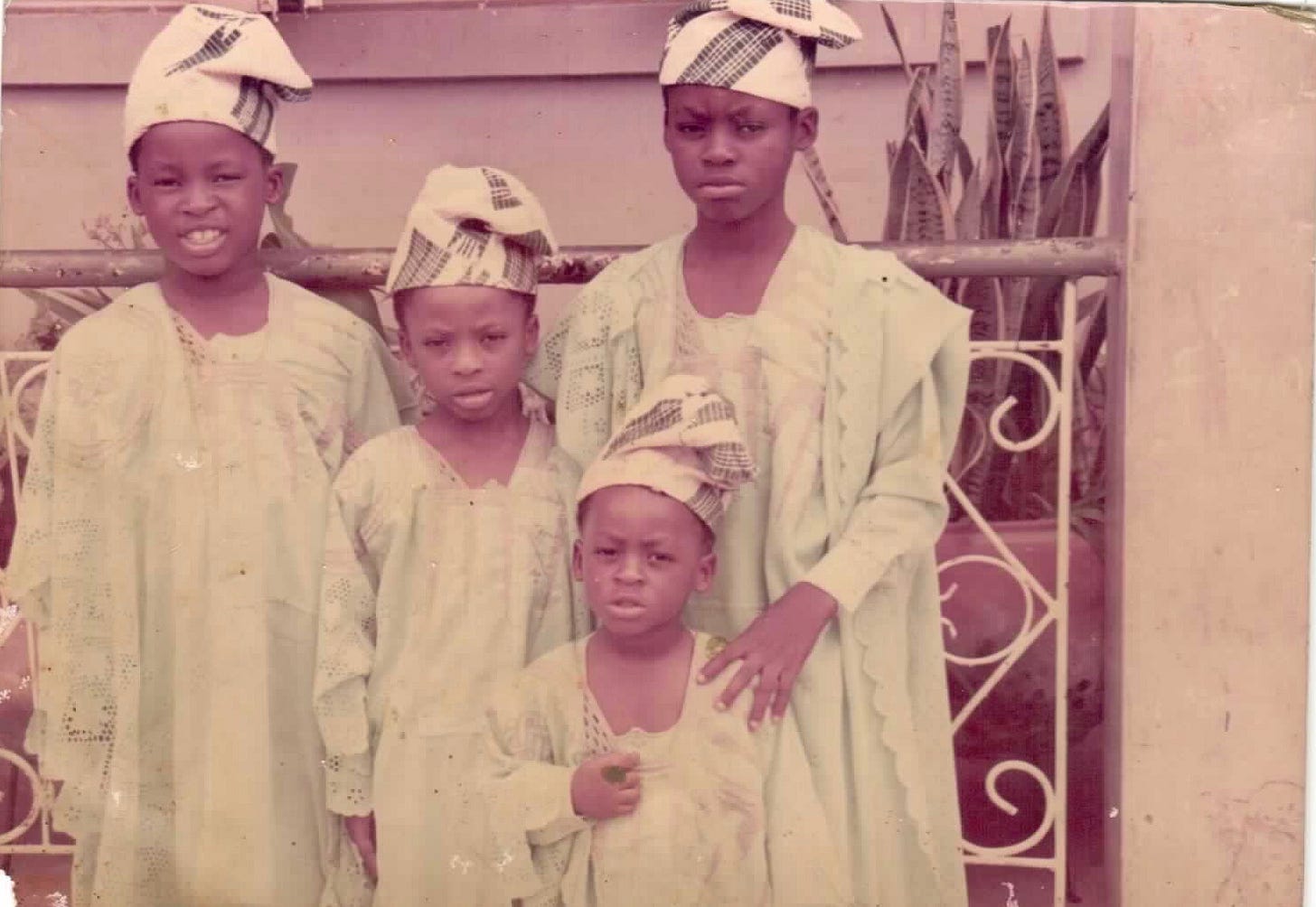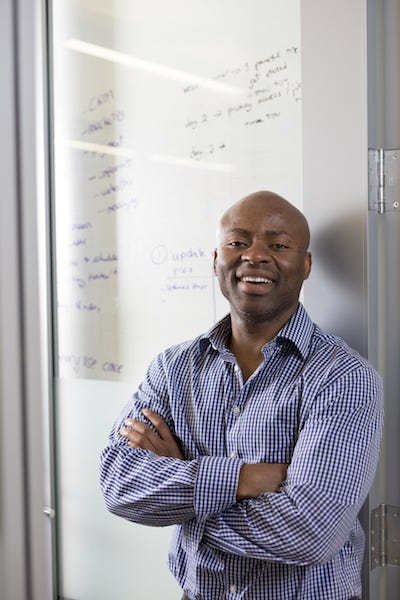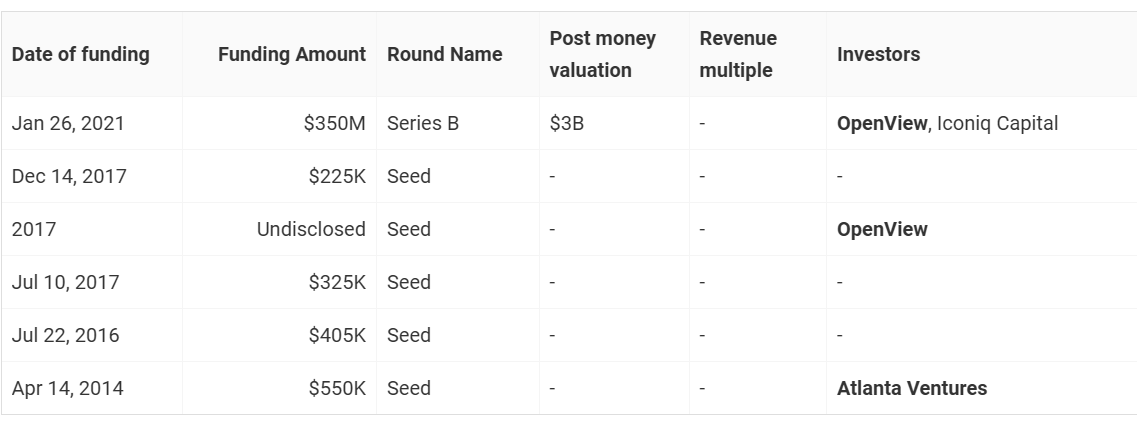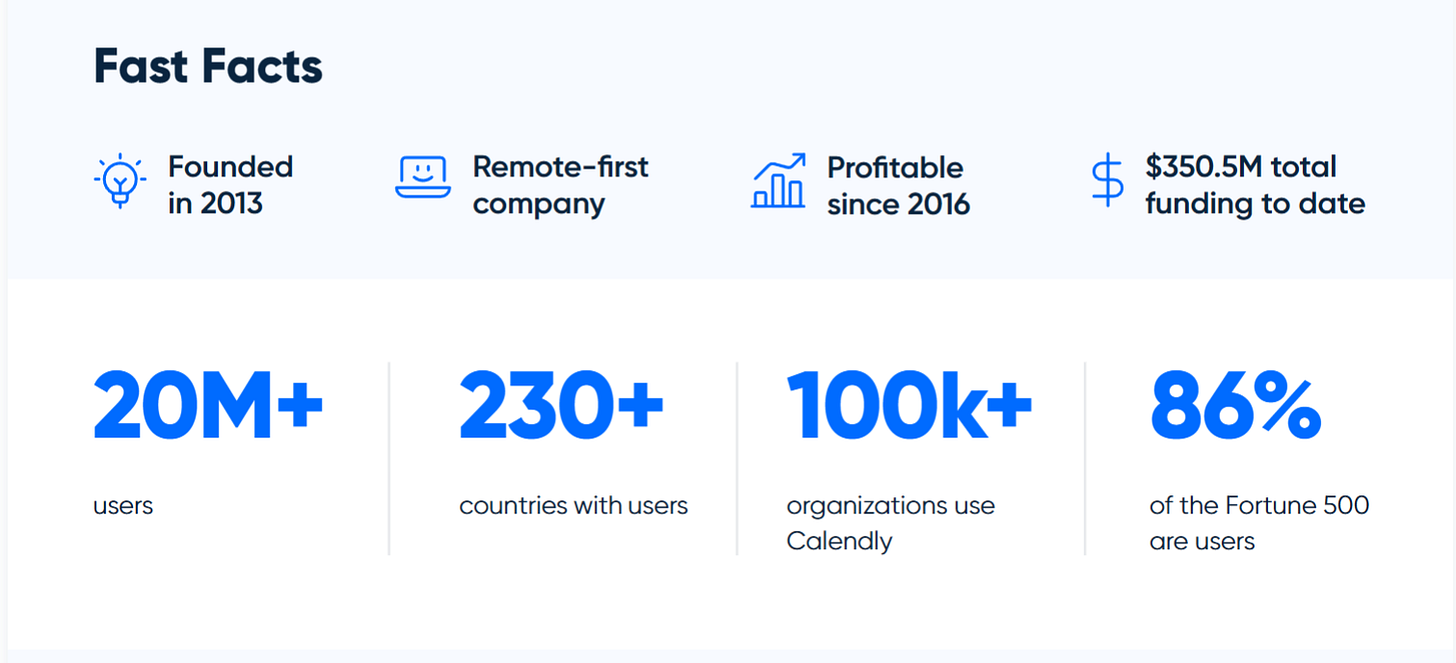Calendly has got a pretty interesting founding story, as I tweeted:
It’s wild to think that the founder of Calendly actually did this. But hold on! Do you know where the story even gets more interesting? Tope, the founder of Calendly, knew nothing about programming, so to develop the product, he contracted with a Ukrainian Firm, Railsware. The founder wiped out his 401(k), maxed out his credit cards, and took a business loan for it.
After spending over $200,000, building the product for almost 6 months, the V1 of Calendly was almost ready (wasn’t fully built yet though). The guy quietly released the product in 2013 with no existing audience, no press, and no marketing. This begs the question: how did Calendly get the first few 100 or 1,000 users? Well, Tope emailed and contacted everyone he knew in sales, recruiting, customer success, and the industry.
The good news? The V1 of Calendly was actually good, as a result, it slowly started getting traction and new sign-ups every day, every week. And eventually, the product gained over 1,000 monthly active users in less than a year just through word of mouth.
However, the biggest problem for Tope was that Calendly hadn’t had a payment integration built yet, and unfortunately, as they say, “When it rains, it pours.” When he wanted to do this, he ran out of money. So even if he wanted to integrate the payment system in the app (so he could charge money for the service), he couldn’t actually do this because he didn’t have “Enough” money to build the feature.
The product was almost a year old, had over 1,000 users, but it wasn’t making a dime. The founder “Did” wanted to monetize the users and make money, but practically, he couldn’t do it because he didn’t have a payment system in place.
Then? Then, the rest is history. It’s one of those stories I really wanna go deep into. So I have divided the deep dive into a few key sections, where I’ll talk about the life of Calendly’s founder, how Tope stumbled upon Calendly, how he made it successful, and became one of the richest black billionaires in the US. If the above story has already made you curious enough to learn more, I promise, you’ll not regret reading the full story.
Get your popcorn ready, and let’s dive in!
Backstory
The story starts in 1981, when, just like his parents, a smart kid, Tope Awotona, who later founded Calendly, was born in Lagos, Nigeria. Born in a middle-class family, Tope was the third of four children (all boys) to his parents. Tope’s father was a microbiologist & entrepreneur, and his mother was a chief pharmacist for the Central Bank of Nigeria.
Tope’s parents had a huge impact on him growing up. His father, who’d often pursue side projects that interested him (later Tope did the same thing) while working at his job. On the other hand, his mother was a tough, ambitious, driven, and strict woman, often asking her kids, “What’s your plan?”
Things were going pretty well, but then…
Lagos is a vibrant city of more than 15 million people, but at times it’s a dangerous place too. Here’s what happened…when Tope was just 12, he watched his father get shot and killed in a carjacking. A devastating moment that literally changed everything for the Awotona family.
Moving to the US
This accident was the sole reason Tope’s mom decided to backpack and move out from Lagos, Nigeria, not just because it wasn’t a safe place to live, but also because the family craved for a better lifestyle and career opportunities.
Three years after the accident, in 1996, the Awotona family moved to Marietta, Georgia, when Tope was 15, joining other Awotona members in the United States. This was single-handedly one of the best decisions Tope’s mom made for the family. Though it wasn’t easy, the family had now shifted to a different place, environment, and culture where they could be judged for their color, skin, tone, etc. But as Tope recalls, “My mom was wise.”
Tope completed his early schooling from Wheeler High School in Marietta, and later got admission to the University of Georgia, where he studied computer science, majoring in Business and Management Information.
Tope’s Early Career
As a broke college kid, he needed to make money, as living in the US was way more expensive than living in Nigeria. So what did the guy do? He started selling alarm systems door to door, a valuable life experience that taught him perseverance, which later helped him build his career.
After graduating from the college, Tope went to work for tech companies like IBM, Perceptive Software, Vertafore, EMC (now part of Dell), mostly as a sales rep, often selling software for tech companies.
But deep down, he knew that doing a “Job” wasn’t a thing he was born for. He was like his dad, an entrepreneur, so he kept thinking about starting a business, and eventually he did try.
First, he built a dating site called STT Media (Single To Taken), but he never publicly released it. The second business he started was about selling projectors through a website called projectspot dot com. And the third business, Tope decided to shift his focus from selling projectors to gardening tools, starting Yardsteal dot com.
Unfortunately, none of his businesses succeeded. And the big part of the reason was, the businesses he was building/selling weren’t interesting to him at all, he was just doing them to make money. But customers had problems, they wanted to learn about the product Tope was selling, but he had no idea what answers to give to his customers, resulting in a bad user experience.
Businesses failed, but they taught Tope valuable lessons and entrepreneurship skills. And also, it wasn’t that he quit his job and started working on these side projects, nope! He was still working at IBM while he tried these business ideas.
Something Clicked
When you solely try to build a business just to make money, things often don’t work, as happened with Tope. But when you build a business that you’re genuinely interested in and want to dedicate yourself to, things eventually work.
Let me explain.
Tope’s whole career mostly revolved around selling, scheduling meetings, customer success, clients' closing, etc. He was a salesman, a sales rep, a salesperson, you call it whatever in this field. And while working in this industry for years, one thing he realized was “How hard it is to schedule meetings or book an appointment online.”
It was a total pain.
Things clicked when one day in late 2012, he had to set up a meeting for something like 20-ish people from three different companies. This required him to keep emailing everyone involved back and forth, resulting in a pretty exhausting experience.
He tried searching for scheduling tools online, but he couldn’t find any right tools—the tools available were either selling to big enterprises or just weren't good enough. The good news was though, it was good for Tope because he felt like there was an opportunity there.
Founding Calendly
Tope, to a degree, knew that this could be a massive opportunity. So in late 2012, after doing enough market research, Tope kicked off the project. He contracted with a Ukrainian product design firm called Railsware to build the product.
But unlike most tech founders, Tope didn’t raise a single VC dollar to build the V1 of Calendly. Instead, he wiped out his 401(k), maxed out his credit cards, and took a small business loan, a cumulative total spending of $200,000. As he noted, “With Calendly I flew into a war zone and put in every cent I had. If you’re going to do something, you have to go all in.”
After spending hundreds of thousands of dollars and building the product for more than six months, the V1 of Calendly was almost ready, however, there were many things that had yet to be built, for example, payment integration.
But as they say, “Imperfect published is better than perfect unpublished.” Tope launched Calendly in September 2013, with no existing audience, no marketing, and no press, from Atlanta Tech Village, a coworking space for entrepreneurs in the city.

Early Days
Tope quietly released Calendly, with no paid marketing or press conferences, instead to get users for the product, he reached out to people he knew in the industry he worked in—sales, customer success, customer management, etc.
And because Calendly was completely free to use, no one showed hesitation to try the product. And this way, the product kept getting new sign-ups each day. But then things got interesting when one of the Data analytics companies, BrightBytes’ customer success team, contacted the same developer firm, Railsware, that had built Calendly.
Since they also needed to schedule meetings, the developers of Railsware told them about the new product they had built to schedule meetings. BrightBytes’ customer success team agreed to try the product, and this way, they used to schedule meetings with developers.
Luckily, the Bright Bytes executives loved the product, and they used the product to schedule calls with parents in K through 12. And then a few parents who were clients of BrightBytes used Calendly for parents-teacher meetings. And from here, it just became a growth loop that helped Calendly gain new users each day. This is how Calendly got its first 10, 100, and 1,000 users.
The big problem was though, Calendly was living-breathing, but it wasn’t making a dime. The founder, Tope, wanted to make money from the product. But since the product didn’t have a payment integration in place, he couldn’t actually do it.
When he wanted to build the payment integration (which comes with complexity), he didn’t have “Enough” money to pay for the development of the feature. So even if he wanted to make things happen, he couldn’t actually do it because he ran out of money to develop the feature.
And by default, Calendly became free to everyone.
The Storm
It had been almost a year since Calendly was released, but it wasn’t making money, and Tope knew he had to do something, otherwise he’d run out of business.
So what did the guy do? He did what anyone would do—raise VC money. It was around the beginning of 2014, Tope raised a total of $550k from Atlanta Ventures, which allowed Tope to build the payment integration and introduce paid plans to its users.
The same year, around September 2014, more than 15,000 people had signed up to Calendly, and it hit roughly $100K in ARR (annual recurring revenue). And from there, the company kept getting better and bigger each year to come.
The Business
Calendly is a fascinating tech company in many ways.
Did you know all the big venture capital firms you know, like Sequoia Capital, Founders Fund, a16z, YCombinator, and Benchmark, aren’t investors in Calendly? Very strange. But it’s not that these VC firms rejected the idea of Calendly, or that they didn’t like Tope as a black immigrant. It was because Tope never asked for money from these VC firms.
However, another big reason why you see these big VC firms didn’t invest in the company it’s that they didn’t get a chance. The founder of Calendly, Tope, didn’t think he’d need to raise capital to make Calendly a successful company, and the core reason for it was because he chased profitability from the beginning.
Calendly became profitable within 2-3 years of founding the company in 2016, and has been profitable since then. This allowed the company to reinvest the money it generated into the business and keep building and scaling the company that way.
Though there are a few selected VC firms the company has raised money from. One, Atlanta Ventures, two, Openview, and three, Iconiq Capital. In January 2021, Calendly raised a total of $350M from Opeview and Iconiq Capital, valuing the company at $3 billion. Before this funding round, the company had just raised a couple of hundred thousand dollars in a few rounds.
The last round seems so big, right? The company needed to, because as the Covid had arrived, more and more meetings were held online, and Calendly had perfectly positioned itself in the market for scheduling meetings, seeing a huge spike in user growth and total meetings booked in that period. It raised capital because Calendly had to scale the product features, build better infrastructure, hire more employees, and expand the business.
But overall, if we talk about the company, it's bootstrapped.
Another interesting aspect of Calendly is that it has no physical workspace. The company decided to go fully remote when COVID-19 started to spread fast in 2020. And still to date, the company has never thought of investing capital in building a physical workspace.
The company is profitable, has over 600+ employees, currently doing $270+ ARR, and has more than 20 million users, including individuals and businesses around the world.
Going forward, do you know what the most ambitious goal the founder of Calendly, Tope, set for the company last year in May 2024? To reach $1 billion in ARR. Too bold, right? But believing that Calendly will get there sooner or later won’t be a wrong prediction.
Thanks for reading, catch you on the next one.




